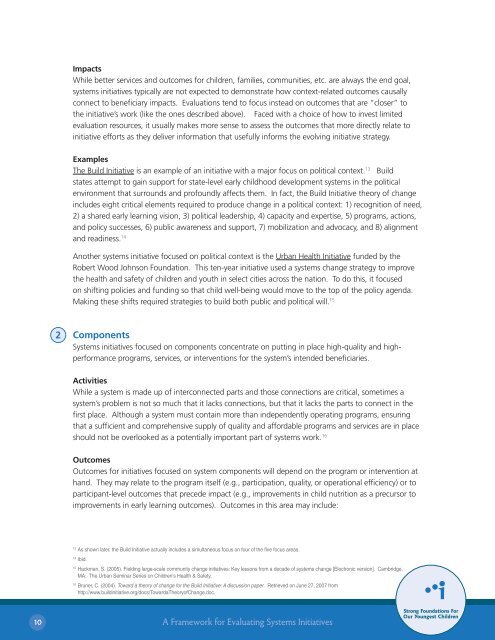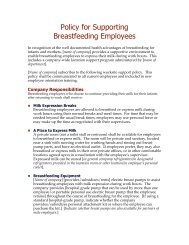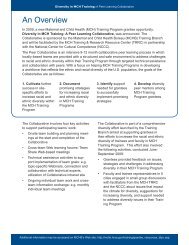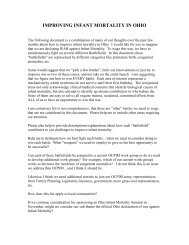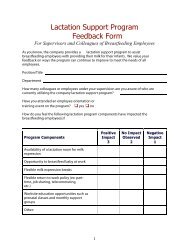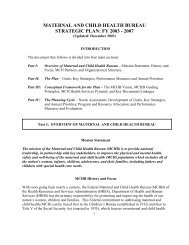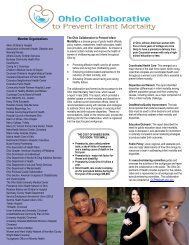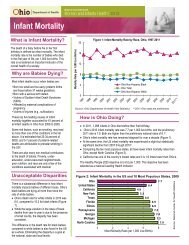A Framework for Evaluating Systems Initiatives
A Framework for Evaluating Systems Initiatives
A Framework for Evaluating Systems Initiatives
- No tags were found...
You also want an ePaper? Increase the reach of your titles
YUMPU automatically turns print PDFs into web optimized ePapers that Google loves.
ImpactsWhile better services and outcomes <strong>for</strong> children, families, communities, etc. are always the end goal,systems initiatives typically are not expected to demonstrate how context-related outcomes causallyconnect to beneficiary impacts. Evaluations tend to focus instead on outcomes that are “closer” tothe initiative’s work (like the ones described above). Faced with a choice of how to invest limitedevaluation resources, it usually makes more sense to assess the outcomes that more directly relate toinitiative ef<strong>for</strong>ts as they deliver in<strong>for</strong>mation that usefully in<strong>for</strong>ms the evolving initiative strategy.ExamplesThe Build Initiative is an example of an initiative with a major focus on political context. 13 Buildstates attempt to gain support <strong>for</strong> state-level early childhood development systems in the politicalenvironment that surrounds and profoundly affects them. In fact, the Build Initiative theory of changeincludes eight critical elements required to produce change in a political context: 1) recognition of need,2) a shared early learning vision, 3) political leadership, 4) capacity and expertise, 5) programs, actions,and policy successes, 6) public awareness and support, 7) mobilization and advocacy, and 8) alignmentand readiness. 14Another systems initiative focused on political context is the Urban Health Initiative funded by theRobert Wood Johnson Foundation. This ten-year initiative used a systems change strategy to improvethe health and safety of children and youth in select cities across the nation. To do this, it focusedon shifting policies and funding so that child well-being would move to the top of the policy agenda.Making these shifts required strategies to build both public and political will. 152Components<strong>Systems</strong> initiatives focused on components concentrate on putting in place high-quality and highper<strong>for</strong>manceprograms, services, or interventions <strong>for</strong> the system’s intended beneficiaries.ActivitiesWhile a system is made up of interconnected parts and those connections are critical, sometimes asystem’s problem is not so much that it lacks connections, but that it lacks the parts to connect in thefirst place. Although a system must contain more than independently operating programs, ensuringthat a sufficient and comprehensive supply of quality and af<strong>for</strong>dable programs and services are in placeshould not be overlooked as a potentially important part of systems work. 16OutcomesOutcomes <strong>for</strong> initiatives focused on system components will depend on the program or intervention athand. They may relate to the program itself (e.g., participation, quality, or operational efficiency) or toparticipant-level outcomes that precede impact (e.g., improvements in child nutrition as a precursor toimprovements in early learning outcomes). Outcomes in this area may include:13As shown later, the Build Initiative actually includes a simultaneous focus on four of the five focus areas.14Ibid.15Hackman, S. (2005). Fielding large-scale community change initiatives: Key lessons from a decade of systems change [Electronic version]. Cambridge,MA: The Urban Seminar Series on Children’s Health & Safety.16Bruner, C. (2004). Toward a theory of change <strong>for</strong> the Build Initiative: A discussion paper. Retrieved on June 27, 2007 fromhttp://www.buildinitiative.org/docs/TowardaTheoryofChange.doc.10A <strong>Framework</strong> <strong>for</strong> <strong>Evaluating</strong> <strong>Systems</strong> <strong>Initiatives</strong>


